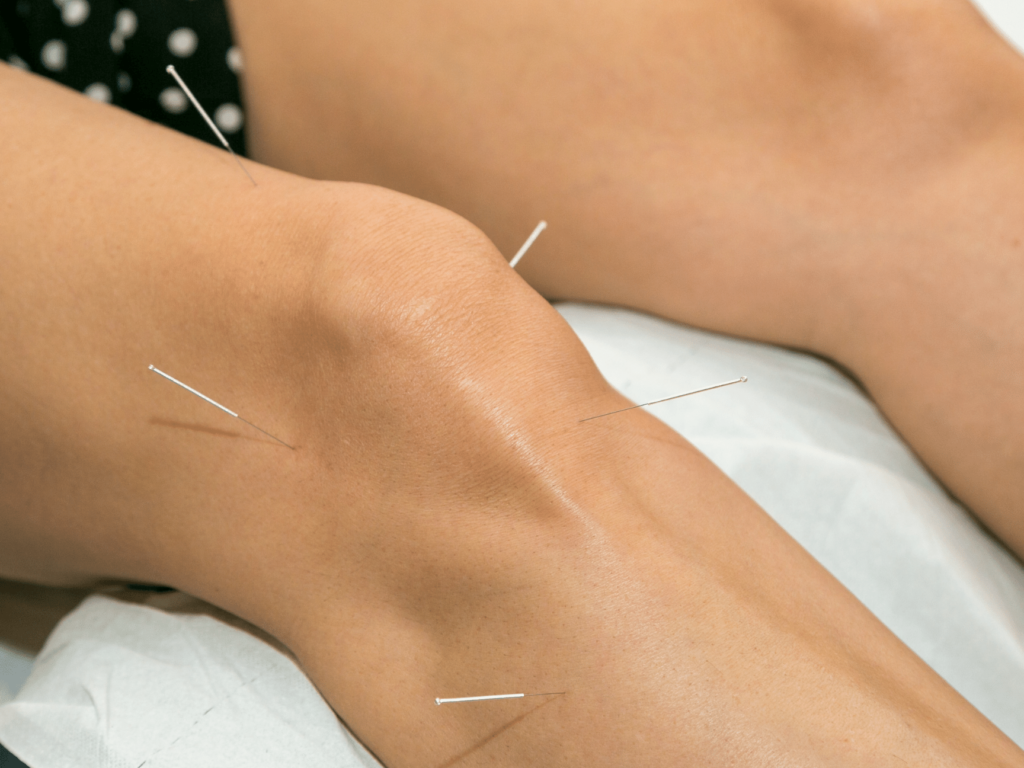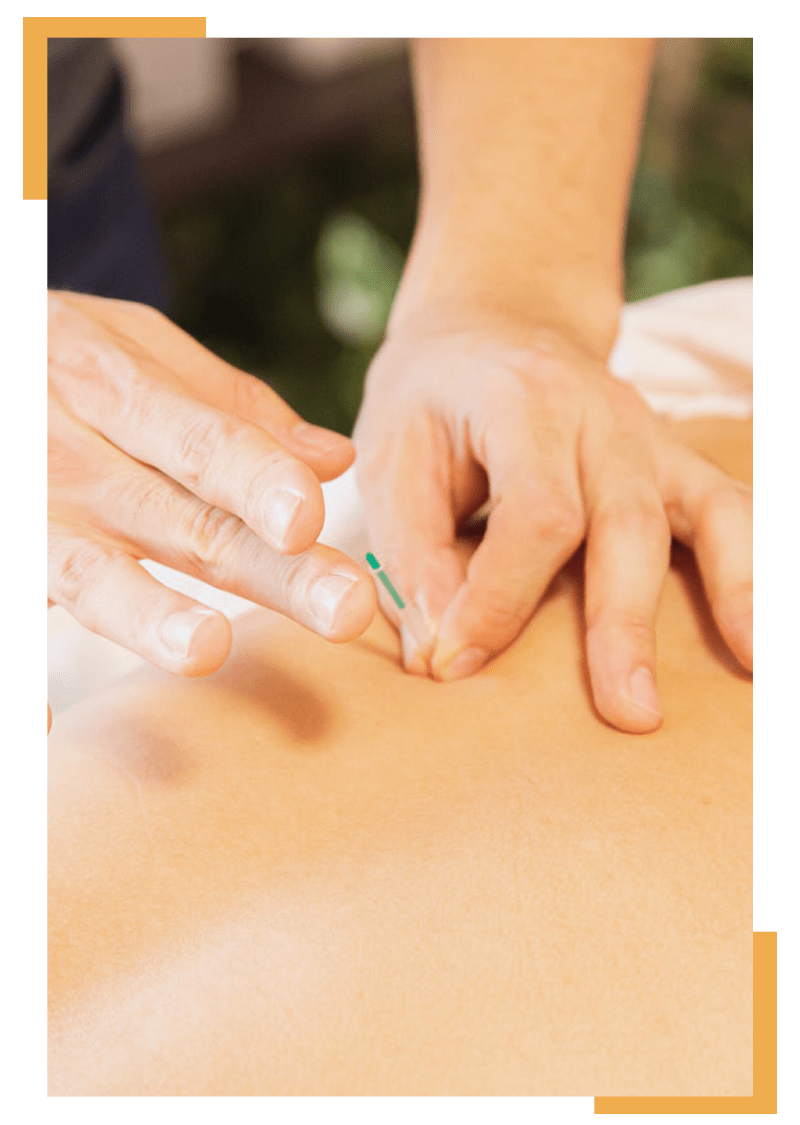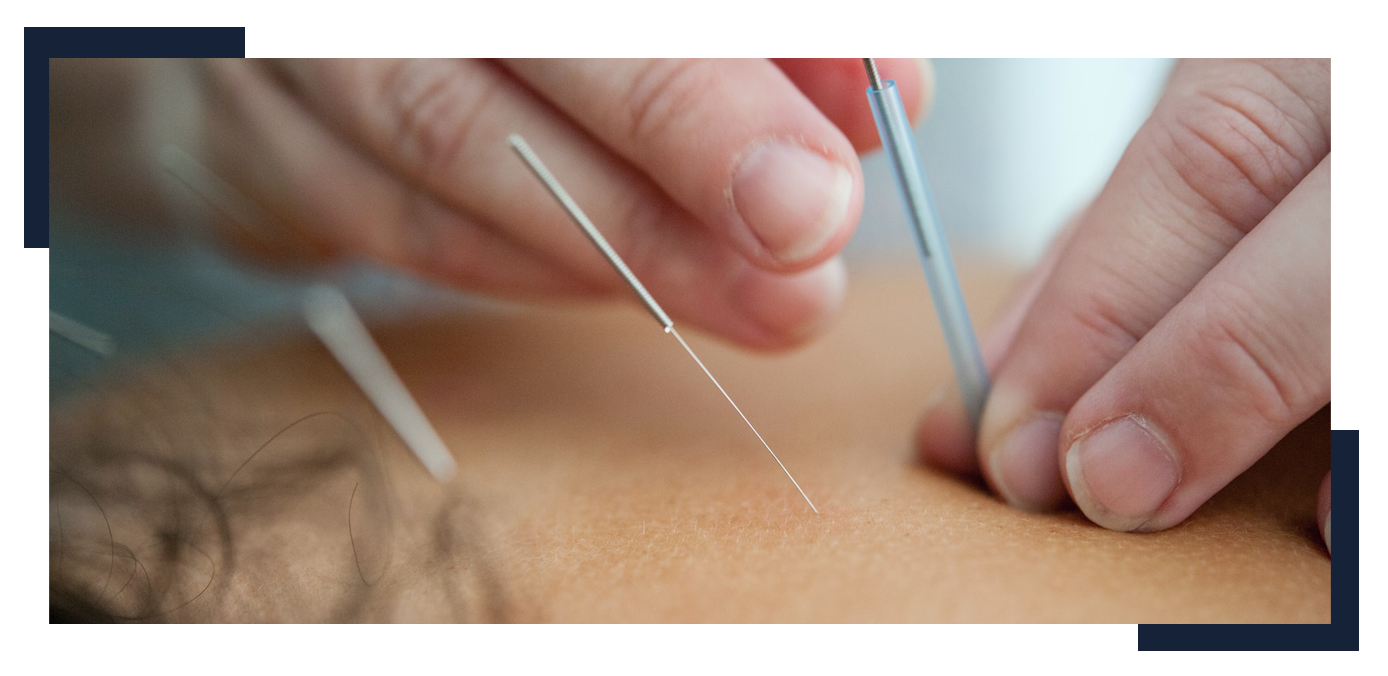Dry Needling Therapy
Are you experiencing chronic pain? You can contact us for dry needling physical therapy services.
Call us: 469-489-5217

What is Dry Needling?
Dry needling therapy helps relieve muscular pain, and it also increases the range of motion. The procedure entails the insertion of filiform needles into the skin. It is a minimally invasive form of treatment that can help relieve pain. The filiform needles are short fine stainless steel needles. Our physiotherapists insert these needles in the trigger points in your tissue or muscle.
This is a modern form of treatment, unlike acupuncture which has been there for years.
Difference Between Dry Needling & Acupuncture
Both dry needling and acupuncture use small needles, and it may be difficult to tell them apart from looking at pictures. Acupuncture is an ancient treatment method originating in China. It entails using needles in the skin. It is based on the idea that life generates ‘Chi’ (invisible energy through a living body along a particular path referred to as meridians).
Acupuncture can help relieve pain by using needles inserted strategically into the skin. It helps release endorphins and regulates serotonin release and production. Dry needling and acupuncture can use the same needles.
However, dry needling is founded on modern western anatomy studies. It is ideal for treating and managing muscular pain. It depends on trigger points rather than chi or meridians.

Schedule an appointment today
If you want to relieve chronic pain, dry needling therapy is a technique to try. Contact us for the services.
Why Choose Dry Needling?
At OneRehab multispecialty center, we perform this outpatient procedure to relieve various symptoms. Dry needling can treat:
- Phantom pain
- Weakness in the muscles
- Disk problems
- Mouth and jaw problems
- Myofascial pain
- Tension-type headaches and migraines
- Joint problems
- Spinal problems
- Whiplash
- Tendonitis
- Pelvic pain
- Repetitive motion syndrome such as in carpal tunnel syndrome
Trigger points have excess acetylcholine, a neurotransmitter responsible for stimulating muscle contraction. A trigger point has a taut band within the muscles. This band can arise as a protective measure due to injury, sustained posture, or repetitive motion. If left unresolved, the bands can become knots.
A trigger point experiences pain mainly because of low blood flow causing hypoxia in the area. These trigger points can cause muscle weakness, restricted motion, or referred local pain. Dry needling is effective in addressing these issues.
How Does Triger Point Dry Needling Model Work
The trigger point model technique deals with myofascial trigger points. They are divided into:
- latent and
- active trigger points.
Active trigger point triggers referred and local pain. It can cause weakness in the muscles, automatic phenomenon, and restricted range of motion.
Latent trigger points do not lead to pain unless stimulated. However, they can change the muscle activation patterns leading to a restricted range of motion. This treatment uses solid filiform placed directly on these points and the pain is felt elsewhere in the body.
Most people require more than one session to achieve the full dry needling benefits. You can repeat the procedure once or twice a week. Your condition determines the number of times this can happen. OneRehab physical therapists will advise you on the best day to come for a follow-up visit. Experiencing side effects can stop the treatment where we can advise alternative forms of relieving the symptoms.

Dry Needling Techniques
During dry needling, the needle remains on your skin once inserted but for a short time. However, the length of the time depends on the therapist. The two dry needling techniques are:
In and Out Technique
This technique uses some of the needling techniques called pistoning or sparrow pecking, which use an in and out method. It means that the needles do not stay for long in the skin. Instead, they are removed once they prick the pressure point.
Non-Trigger Point Technique
Some dry needling techniques involve treating a broader landscape of the central nervous system, a method known as non-trigger point therapy. Instead of only pricking the area with pain, the therapist inserts needles around the point of pain. This technique focuses on the idea that pain comes from the greater nerve or muscular issue, not just a specific area of pain.
What to Do After the Procedure
Once you have gone through dry needling physical therapy, you need to stay well hydrated. Ensure you drink a lot of water. In the cases where your muscles become sore after the session, our therapists advise you to rest. You can also use heat, ice therapy, or take a warm bath to feel better. Adding Epsom salts in the bath can help relieve the pain.
Notably, your muscles can be very sore in the morning. However, you can feel better after a few days. The bruising from the filiform needles can last for almost a week.
Are There Side Effects?
It is common to experience mild dry needling side effects. Severe side effects are very rare. The treatment is not recommended for pregnant women. If you have an infection, you also need to wait until it’s resolved fully before dry needling treatment. Patients on blood thinners should also avoid this therapy. Also, to limit dry needling risks, you need to communicate with our therapists if you have any of the following conditions:
- Epilepsy
- Compromised immune system
- Bleeding disorders
- Diabetes
- Lymphedema
- Vascular disease
The most common side effects that you will experience from dry needling are bruising, temporary soreness, and bleeding.
You can also experience a short-term increase in pain, headache, fatigue, skin irritation, sweating, and dizziness. After the procedure, if you experience a shortness of breath or major bleeding, it can be an indication of organ failure and you may need to call a doctor.
Using non-sterile needles can put one at risk of infection, illnesses, and diseases. At OneRehab, we use highly qualified physical therapists and the correct sterile needles, thus preventing complications.
Contact Us Today
Trigger point dry needling has a low risk; it is also affordable and an evidence-based treatment that helps treat many conditions. If you want to get rid of chronic pain, weakness in the muscles, mouth and jaw problems, or other conditions, you can reach out to us and book an appointment. At OneRehab, we provide the best physiotherapists to meet your physical therapy goals.
OneRehab Richardson
1761 International Pkwy Suite 135, Richardson, TX 75081, United States
OneRehab Dallas
6080 N US 75-Central Expy 1000 #125, Dallas, TX 75206
Call Us
972 845 7875
Email Us
info@onerehab.com
Working Hours
M - F 7:00 AM – 7:00 PM
Sat 8:00 AM – 2:00 PM



